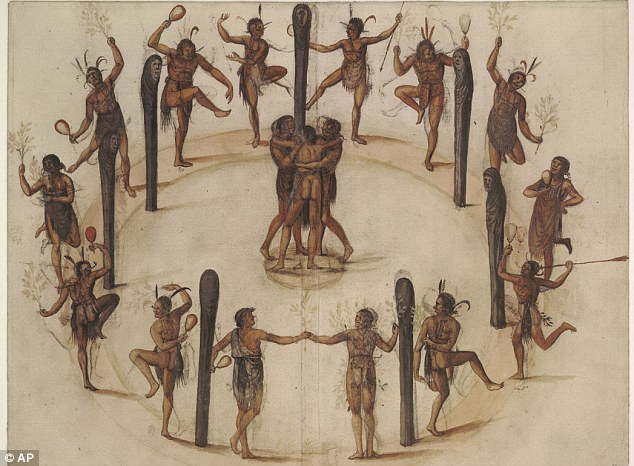
November is designated American Indian Heritage month in North Carolina coinciding with Thanksgiving Day. In school, children are learning about a day of sharing and peace, about the brave early settlers, and about helpful Native Americans. These indigenous people are usually the favorite part of the history lesson. No wonder, their legacy is notable. On the short list of their Thanksgiving “gifts” to the European settlers are: corn (and the secret to roasting corn to make popcorn), beans, squash, utilizing gourds as containers, making southern Brunswick stew, and the knowledge of when and where to obtain oysters, fish, and ducks. Food for thought: The way we interpret history also changes over time, therefore America’s attitude about the Native Americans has also changed.
North Carolina history cites several official special days of Thanksgiving. The first was in April, 1758. Royal Governor Arthur Dobbs proclaimed a day of Thanksgiving and gratefulness for survival following the French and Indian Wars. President George Washington asked the Continental Congress to declare November 26, 1784 a national day of Thanksgiving after the American War of Independence. Later, Governor Charles Manly proclaimed November 15, 1849, as North Carolina’s first Thanksgiving. The holiday wasn’t fixed at the nationwide until Abraham Lincoln designated the last Thursday of November as a national Day of Thanksgiving.
In Beaufort County’s history, the first heartfelt Day of Thanksgiving (at least for the settlers) can be considered Nov 25, 1712, the date of the first peace treaty of the Tuscarora War in eastern North Carolina. It was signed by the colonial Governor Thomas Pollock and “King Blount” of the Tuscarora Native Americans following the outbreak of the conflict. The Tuscarora War is one of many conflicts that occurred as settlers pushed westward and national opinion and policy toward American Indians swung from friend and trading partner to that of foe. The war, fought between the European settlers and the Tuscarora led by “King Hancock”, began on September 22, 1711 when the natives, weary of settler incursions on their land and the enslavement of their people, assaulted English outposts. Settlements in what is now Chocowinity, Blounts Creek, Bath, areas between the Pamlico, Neuse and Trent Rivers including Grifton down to New Bern were attacked. “King Blount,” as part of the agreement, pledged loyalty and promised to help eliminate the remaining hostile Native American tribes, especially “King Hancock” whom Pollock considered the primary enemy. The peace did not last long as fighting soon broke out again. The date of the major and definitive treaty between Governor Pollock, "King Blount,” and the last of the warriors was February 11, 1715. On that date, Pollock was finally satisfied and the Tuscarora War was declared over. "King Blount” was proclaimed a sovereign king of the Native Americans and a refuge was designated for him and his allies near Lake Mattamuskeet.
Thus ended the Native American campaign launched in September, 1711 with a coordinated attack. It represented a boiling-over and eruption of the Tuscarora frustration over intrusions on their land. As a result, over 200 settlers and upward to a 1000 natives lost their lives.
By Billie-Jean E. Mallison, for the Historic Port of Washington Project (http://www.hpow.org), sourced primarily from David La Vere’s The Tuscarora War.


